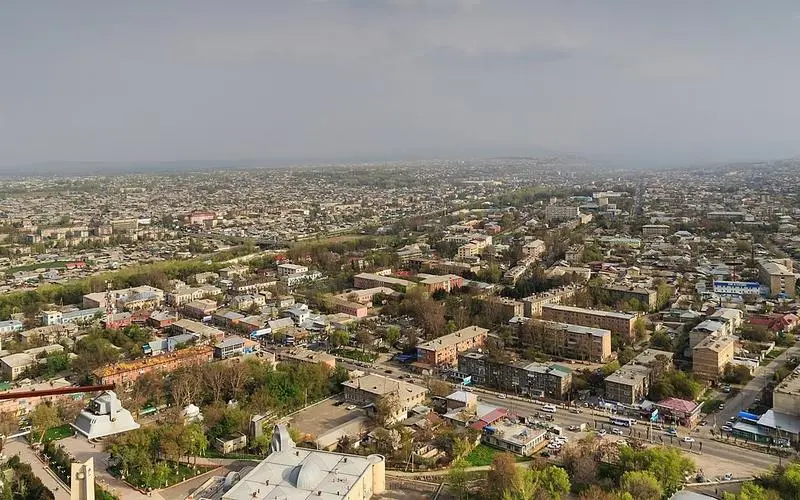Used Car Export Guide (2023) – Kyrgyzstan
(1) Basic situation
The Kyrgyz Republic (shortened as Kyrgyzstan) is located in Central Asia, bordering Kazakhstan to the north and adjacent to China to the east. Its capital is Bishkek, with a land area of approximately 199,900 square kilometers and a population of 7.2 million people. According to data from the National Statistical Committee of Kyrgyzstan, the country’s GDP in 2023 was $13.98 billion, with a year-on-year growth of 6.2%, and the per capita GDP is about $2,000. According to data published by the Chinese Customs, China remains Kyrgyzstan’s largest trading partner. The total trade volume between China and Kyrgyzstan in 2023 reached $19.8 billion, an increase of 27.8% compared to the previous year. Among them, Kyrgyzstan’s exports to China amounted to $831.8 million, an increase of 30% year-on-year, while China’s exports to Kyrgyzstan were $19.72 billion, up 27.2% year-on-year.
In terms of cooperation, in May 2023, the two sides signed a joint declaration to establish a new era of comprehensive strategic partnership, deepening the partnership. On October 25, 2023, the governments of both countries signed a plan for cooperation in adjacent areas, actively promoting cooperation projects in trade and investment, cross-border transportation, port construction, agriculture, energy, and other fields.
Kyrgyzstan’s natural resources mainly include gold, antimony, tungsten, tin, mercury, uranium, and rare metals. Among them, it ranks third in the world in antimony production and first in the CIS, second in tin and mercury production in the CIS, and third in hydropower resources among CIS countries.

(2) Automobile market conditions
Kyrgyzstan is a left-hand drive country with a relatively weak domestic automotive industry, heavily reliant on imports, especially second-hand vehicles, with a high market share of Japanese brands. Since 2022, there has been a significant increase in automobile imports to Kyrgyzstan.
According to reports from the Kyrgyzstan Economist website, from January to October 2023, Kyrgyzstan imported a total of 143,000 passenger cars, with imports totaling approximately $2 billion. China has become its largest supplier of automobiles, exporting 44,720 vehicles with a transaction value of $688 million.
According to statistics from the Chinese Ministry of Commerce, China exported 71,000 used cars to Kyrgyzstan in 2023. Currently, Chinese automobiles imported into Kyrgyzstan are mainly used for re-export to the Russian market, driven by the huge demand in the Russian automotive market. The local demand for imported vehicles in Kyrgyzstan still has untapped potential.
The capital of Kyrgyzstan, Bishkek, has long been rated as one of the most polluted cities in the world. To address this issue, Kyrgyzstan is actively promoting the development of the new energy vehicle industry. On one hand, it encourages consumers to use electric vehicles by offering preferential import rates for electric cars.
On the other hand, it actively encourages Chinese electric vehicle companies to establish manufacturing plants domestically. However, Kyrgyzstan has only about 30 charging stations nationwide, most of which are located in the capital, Bishkek. Additionally, the country faces energy shortages due to insufficient power generation capacity. The lack of charging infrastructure and energy shortages are the main obstacles hindering the development of Kyrgyzstan’s new energy vehicle industry.
(3) Used car import policies and regulation
1. Import policy
Kyrgyzstan only allows the import of left-hand drive vehicles, with imported used cars not exceeding 10 years in age and meeting at least Euro 2 emission standards. Imported vehicles are subject to inspection. Imported vehicles are classified into temporary and permanent imports. Temporary imports, including motorcycles, must be exported at the end of the agreed period. Kyrgyzstan encourages the import of low-age used cars, imposing higher tariffs on used cars older than 7 years.
2. Tax policy
Temporary import vehicles are subject to a 3% value-added tax and a monthly fee of 0.15% of the contract amount.
Permanent import vehicles are subject to customs duties and value-added tax (VAT). The customs duty is determined based on the age and engine displacement of the vehicle, with the duty being inversely related to the age:
- 1. Vehicles aged less than 3 years are classified as new cars. Customs duty ranges from 10% to 15% of the vehicle’s cost price, depending on the engine displacement.
- 2. Vehicles aged 3-7 years incur a customs duty of 20% of the vehicle’s cost price or a duty based on the vehicle’s specific age, ranging from 0.36 to 0.80 euros/ml. The higher duty between the two options is applied as the import duty.
- 3. Vehicles older than 7 years incur a customs duty ranging from 1.4 to 3.2 euros/ml. Kyrgyzstan’s import VAT for used cars is 12% of the vehicle’s customs price.
- 4. Regarding new energy vehicles, the Eurasian Economic Union region maintains a zero tariff policy for the import of pure electric vehicles until 2025. Kyrgyzstan allows tax-free import of 10,000 new energy vehicles annually and offers tariff incentives for hybrid vehicles.
3. Documents required for import
Original ownership and registration certificates
Original invoice
Driver’s license and international insurance certificate
Bill of lading
Copy of passport
Copy of visa
Original bill of lading (OBL) / air waybill (AWB)
Original technical passport with cancellation mark
Letter of employment
Customs commission letter
If you want to import cars from China, you are welcome to contact us.

